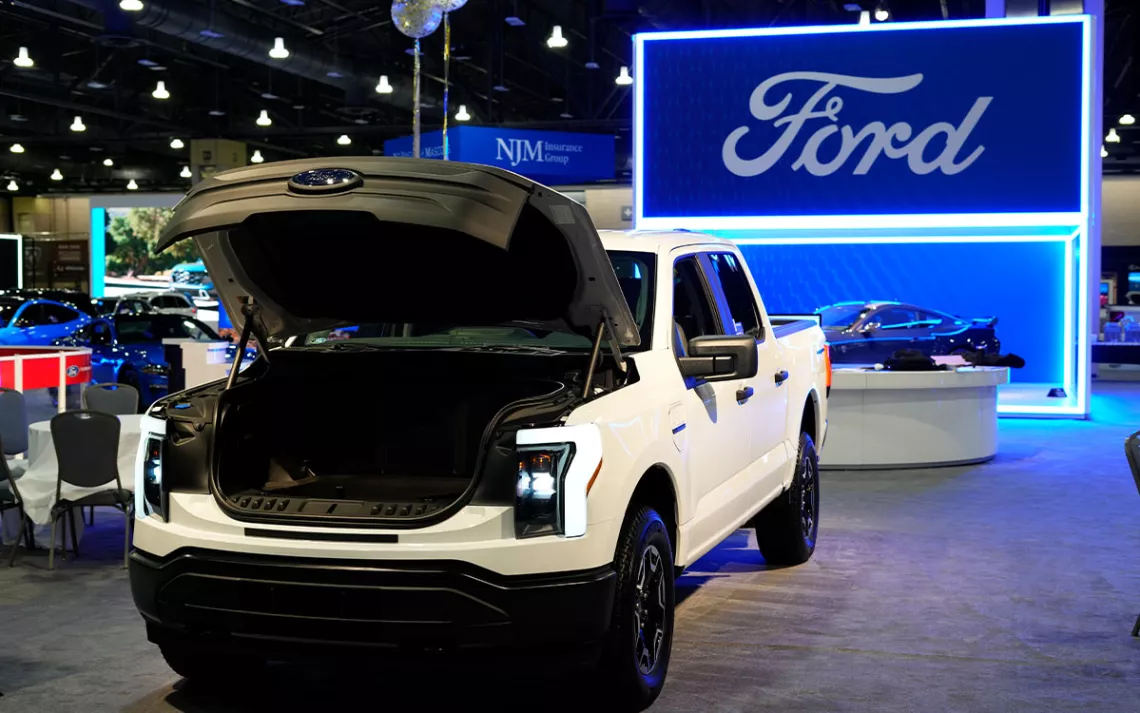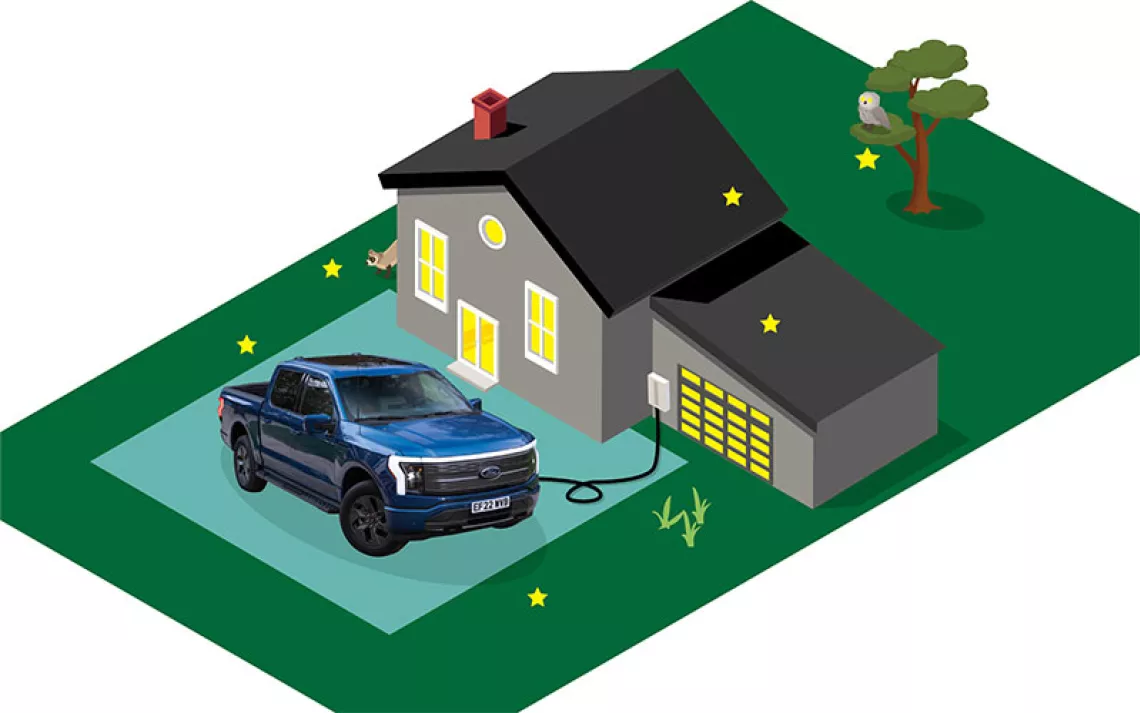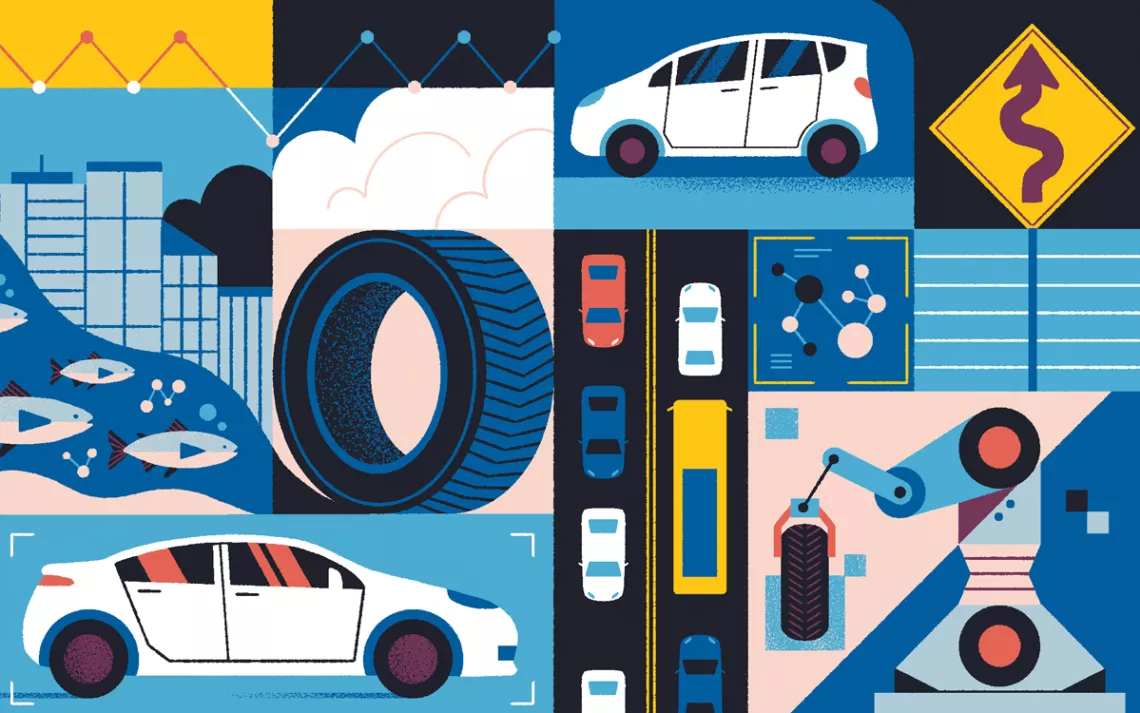How Clean Energy Naysayers Help China and Hurt American Workers
Domestic EV manufacturing is a win-win-win for the United States

The Ford F-150 Lightning at the Philadelphia Auto Show in 2023. Massive battery plants planned in Tennessee and Kentucky for Ford's electric vehicles are on track to receive up to a $9.2 billion federal loan, in what would be the biggest award under the Department of Energy's loan program since President Biden took office. | Photo by Matt Rourke, AP File
Distributed by Trice Edney Newswire
Electric vehicles are the future of transportation. As a driver of an (American-made, union-made) electric vehicle myself, I know firsthand the amount of money I have already saved compared to when I drove the gas-powered version of the same model. And that is before considering the benefit to our air quality, the climate, and how fun it is to drive.
Roughly 60 percent of electric vehicles sold worldwide are made in China. That is compared to just 8 percent for American EVs. Moreover, Chinese sales continue to increase at a faster rate—79 percent compared to 55 percent for American EVs between 2021 and 2022.
Of course, part of the reason for this is the low prices of Chinese models. And part of the reason those low prices are possible is that the Chinese government has not exactly played fair—heavily subsidizing the industry in order to maintain its market dominance. But another reason China is so competitive is because of its domestic supply chain, especially localized battery production.
US policymakers and American automakers are finally waking up to the urgency of investing in EVs, just as others are investing in solar and wind energy and battery manufacturing. But these staples of the next economy have their detractors—primarily the fossil fuel industry and the politicians and media outlets that often act as their mouthpieces. It goes further than that though.
A big part of the naysayers’ messaging strategy is to inflame fears about economic and social change. Tuning into networks like Fox News and One America News Network, it is not uncommon to get a taste of the disinformation campaign against EVs and other clean energy solutions. They wrongly portray policies meant to reduce carbon emissions and other pollution—especially related to cars and consumer appliances—as an attack on consumers’ freedom. They also appeal to a general nostalgia for “the good old days” when no one was asked to think about energy efficiency or climate-warming pollution.
Most Americans know, however, that we cannot afford to bury our heads in the sand. It would not only be a road to ruin for our climate but would also prevent American competitiveness in the global economy and be a disaster for American workers.
Right now, we are seeing the beginning of a green jobs boom and the rebirth of the American manufacturing sector. It is thanks to decisive actions by the Biden administration—especially legislation like the Inflation Reduction Act, the Bipartisan Infrastructure Law, and the CHIPS and Science Act, along with recently announced tariffs. I wrote about it recently as President Biden’s anti-NAFTA moment. This is the way we will win the next economy.
Just look at Illinois, where a $2 billion EV battery facility in Manteno will produce 2,600 new good-paying jobs. Lion Electric’s new plant in Joliet, Illinois, will produce about 20,000 electric school buses and trucks a year and employ hundreds of workers, and is the first new vehicle assembly plant in the Chicago area since 1965. EV manufacturer Rivian, which already employs about 8,000 people in Bloomington and Normal, Illinois, is expanding its production in the state. And one of the outcomes of last year’s strike by the United Auto Workers (UAW) is the reopening of Stellantis’s plant in Belvidere, Illinois, that was idled in February 2023 but now will produce EVs and bring at least 1,300 jobs back to that community. In addition to the federal action mentioned above, this EV boom in Illinois is being helped by state initiatives like Governor JB Pritzker’s Reimagining Energy and Vehicles incentive package.
Elsewhere in the Midwest, the Department of Commerce just reached a preliminary deal with the company Polar to expand and modernize its semiconductor manufacturing in Bloomington, Minnesota. A battery manufacturing boom throughout the Southeast now has that region being referred to as the “Battery Belt.” And domestic solar is also helping to revitalize manufacturing in the South. The Qcells solar panel plants in Dalton and Cartersville, Georgia, are soon expected to employ nearly 4,000 people.
In China, even green manufacturing is dirty. The building of products like EVs and solar panels is powered mostly by coal. And the production of raw materials for those products—like aluminum and steel—is rife with toxic pollution. In the US, by contrast, the transition toward powering our electric grids and industries with clean energy sources is well underway. And new manufacturing methods are making materials like aluminum and cement cleaner than ever to produce. Add to that the boom in good American jobs and it is clear that moving manufacturing and supply chains for the next economy to our shores is a win-win-win for the United States.
 The Magazine of The Sierra Club
The Magazine of The Sierra Club



